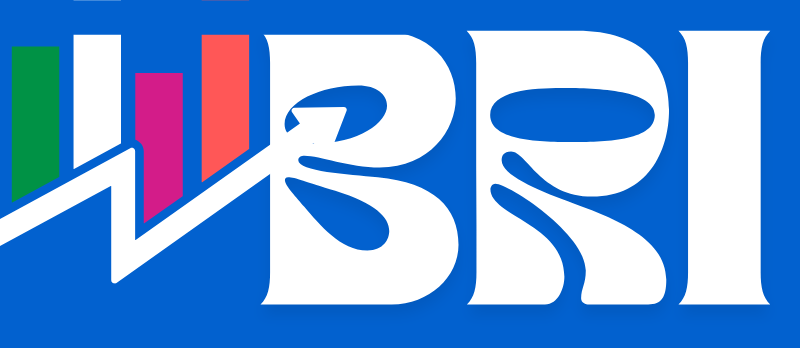In the past, it was conventional thought that risk management in banking was nothing more than a line of defense, something mandatory in this case for policy regulation, loss prevention, and the assurance of operational stability. But with banks entering an age of rapid digital change, and the market becoming more and more competitive, a new storyline is taking shape: the Integrated Risk Management (IRM), which we know today is no longer just about safeguarding but also making possible innovation and business growth.
Modern banking firms today face an increasingly volatile trajectory. Cyber threats are constantly mutating, globalisation and its effects on the markets ebb and flow daily, financial crises of stunning dimensions develop overnight, and then in days flatten whole economies. It is also becoming harder and harder for consumers to have trust in banks or banking systems at all; regulators grow more demanding with each passing year that passes. To successfully navigate these many complexities, a risk management strategy that is agile, adaptive, and closely in sync with the business’s goals is essential. This is where IRM comes into play.
Understanding the Strategic Value of Integrated Risk Management
Integrated Risk Management harvests every kind of danger, operational, financial, compliance, cyber, third-party, all into one general policy and set of attitudes. It stresses taking the long view that risks the institution as a whole remaining, while it introduces risk awareness into decision-making at every level.
Unlike the traditional risk management systems, which all run independently, with no oversight from higher up, IRM platforms are designed to be a single platform for data sources, risk functions, and wherever workflows may be. This coordination of the relationship between risk and everyday business operations allows banks to not only deal with threats more effectively but also to explore new opportunities for expansion in safety, invest in good fortune, and gain a competitive advantage.
The Innovation-Risk Equation in Banking
In a way of such once-for-all-approval applicants, innovative digital products launch in a bank, such as AI technologies, but it is better to accept perceived risks than avoid innovation due to them. All of these problems will be solved with the advent of IRM.
IRM Feedback for Strategic Leaping Reaping ever-increasing profits from spot:
IRM has a profound effect on the direction a company takes its business and thus has significant implications for every business component.
| IRM Capability | Impact on Business Growth |
| Enterprise-wide Risk Visibility | Enables better strategic planning and capital allocation |
| Real-time Risk Monitoring | Improves agility in launching new products or entering new markets |
| Regulatory Alignment | Speeds up compliance for faster go-to-market strategies |
| Scenario Analysis and Stress Testing | Guides innovation with predictive insights and controlled risk |
| Vendor and Third-Party Risk Management | Supports scaling through partnerships with minimized exposure |
| Integrated Cyber Risk Framework | Builds customer trust and enhances digital service adoption |
Banks that successfully embed IRM into their operations are better positioned to explore new revenue streams, respond to emerging trends, and gain investor confidence.
- IRM: A Key Driver of Digital Transformation: As open banking, embedded finance, and fintech partnerships increasingly reshape financial services, IRM stands as a cornerstone of digital transformations done right. What does that mean in detail?
- Speeding Time to Market: By automating risk assessments, streamlining compliance checks, and fulling reporting into one place, IRM often shaves months off the launch process. Simple ideas don’t take long to have a huge impact.
- Building Trust Via Digital Channels: Trust in digital banking is a major issue. Though proactively bearing down on cyber threats, fraud, and data privacy concerns, IRM safeguards the industry’s digital platforms, underpinning customer loyalty and the satisfaction of regulators.
- Facilitating Agile Decision-Making: IRM platforms provide dynamic dashboards, risk indicators, and practical insights enabling decision makers to make timely and in decisions. Such flexibility is indispensable in today’s fiercely competitive market, where a split-second’s delay can spell the death of a deal.
The Role of Culture and Leadership in IRM Success:
Advanced technology, while necessary, will not realize the full potential of Integrated Risk Management. The organizational culture of the enterprise and leadership are equally important.
Bankers need to create an organizational culture where everyone is responsible for risk-taking, not just the compliance team. At the same time, leadership should promote risk-aware decision making and reward teams that discover hazards early with action before they hurt us.
That is why the new IRM framework actively encourages transparency, cross-functional collaboration, and constant learning. When operationalized systematically, this strategy makes risk a shared language within the organization itself, thereby sparking both collective responsibility and innovation.
Final Thoughts: Rethinking Risk as a Growth Lever
In 2025 and beyond, banks cannot keep treating risk management as something that incurs cost or brings only regulatory approval and punishment. Integrated Risk Management, the new one-stop engine for strategic growth: a framework to help you achieve efficiency in operations, innovate, and gain long-term benefits that are essential to your business. This is a bit much, of course, all bureaucracies more or less work on cost accounting principles.
By using IRM, banks gain the ability to:
Enter new markets faster, accelerate the release of new or disruptive technologies with confidence. Surely maintain trust with stakeholders and regulatory authorities. To protect their brand in an era of reputation risks. Navigate uncertainty with clarity
Far-sighted banks have already integrated IRM into their innovation and transformation strategies. For those who still cling to the old ways of doing things, the message is clear: evolve or die.
Connect with our Experts
